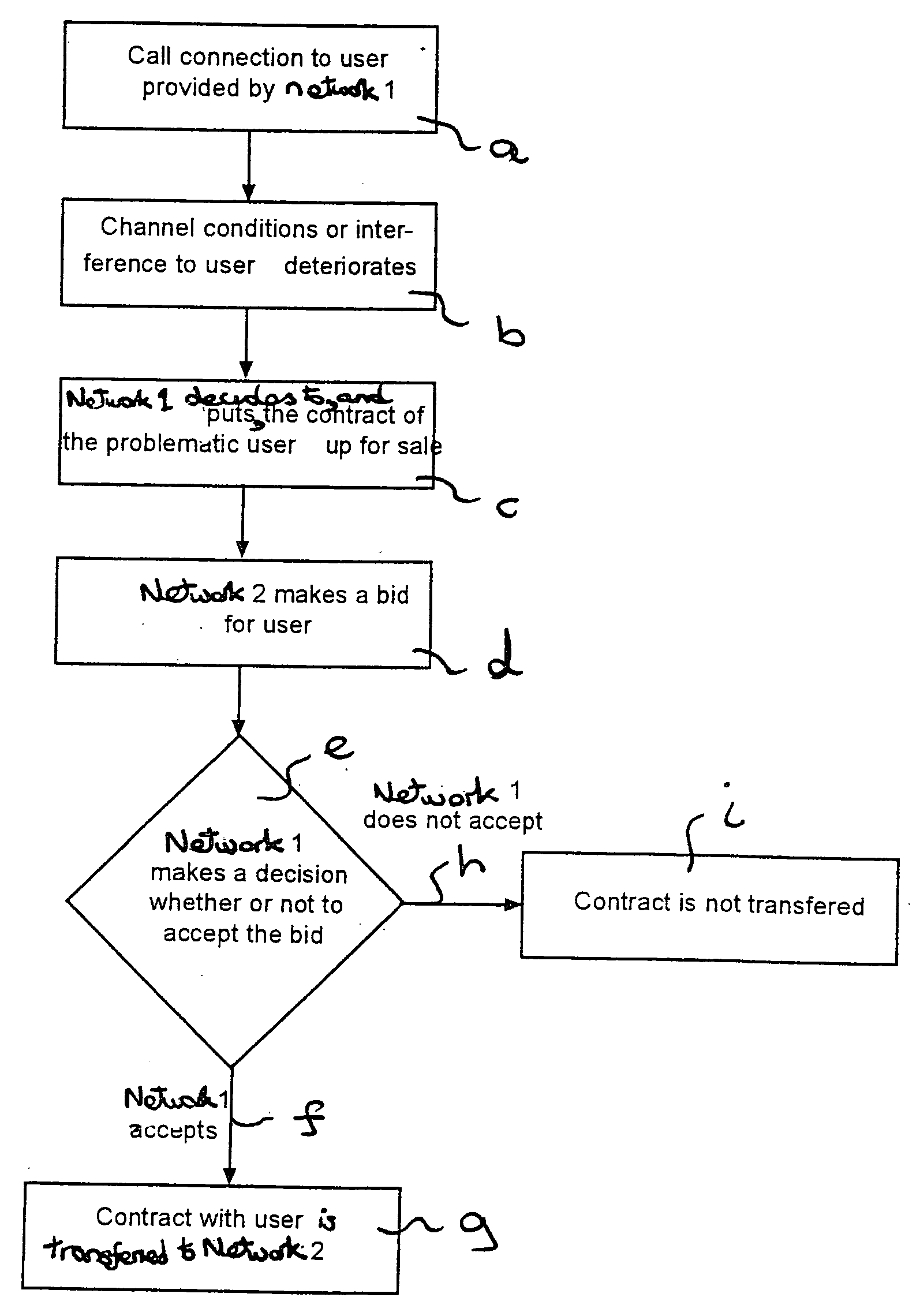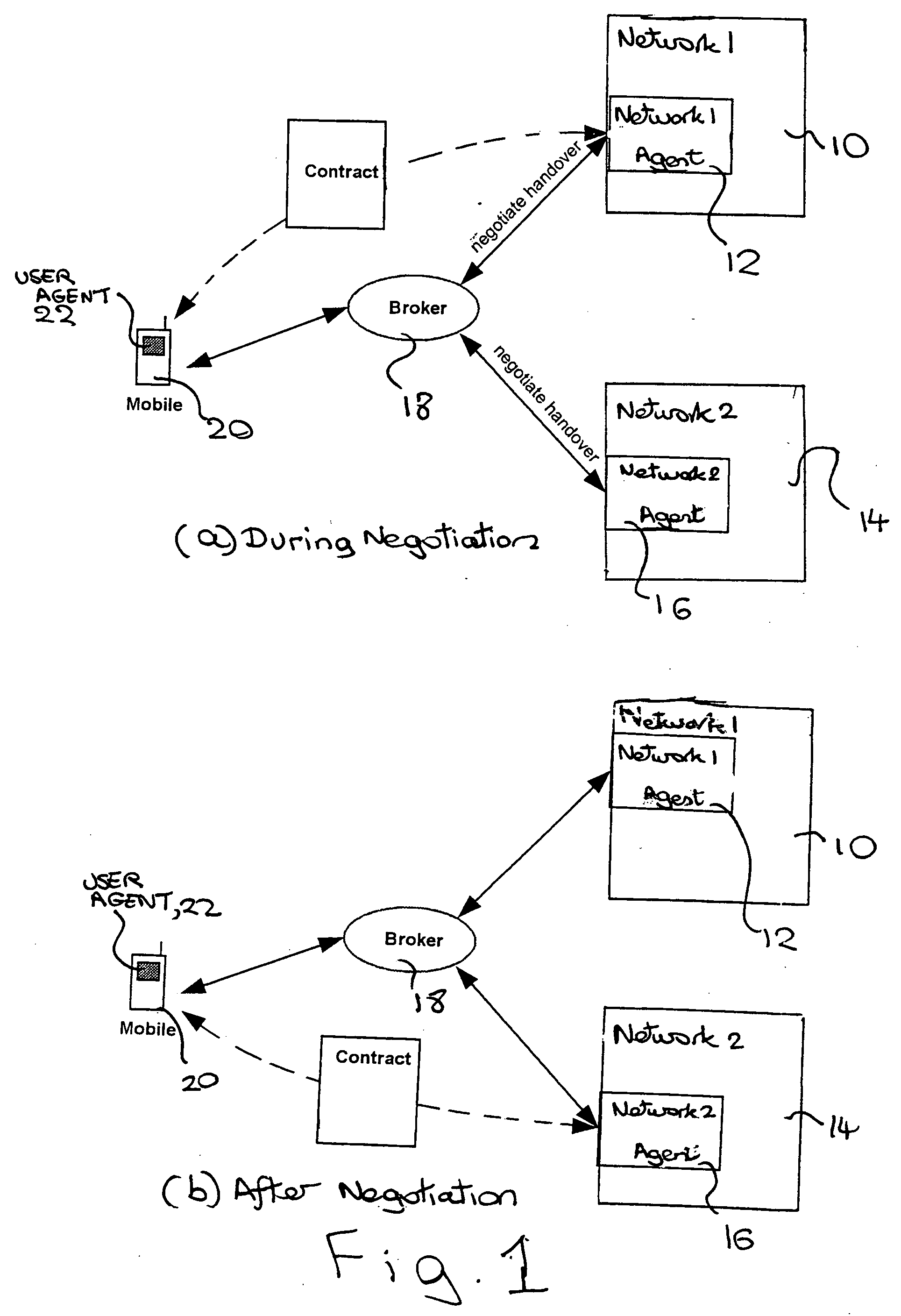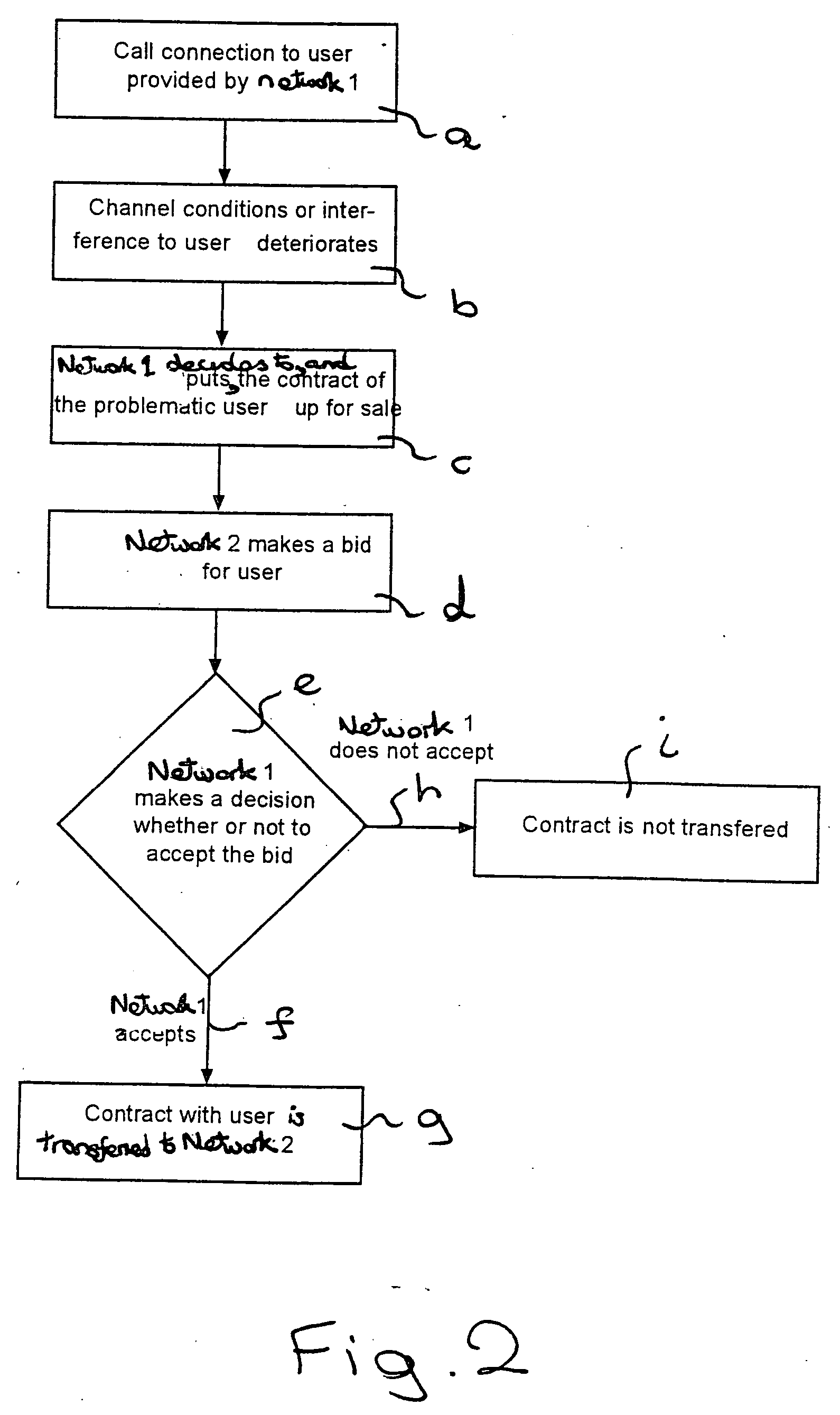Transferring between or within networks a telecommunication service to a user terminal
a telecommunication service and user terminal technology, applied in the field of telecommunications network services transfer, can solve the problems of large amount of network resources that are sometimes required to handle calls to some user terminals, affecting the service quality of users, and the level of network load, so as to improve the system capacity, reduce the amount of network resources, and improve the radio condition
- Summary
- Abstract
- Description
- Claims
- Application Information
AI Technical Summary
Benefits of technology
Problems solved by technology
Method used
Image
Examples
Embodiment Construction
[0016] As shown in FIG. 1, a first radio access network (RAN) 10 includes a software entity that is a negotiation agent 12. A second radio access network 14 also includes a corresponding software entity of a negotiation agent 16. The networks 10,14 are radio access networks such as Global System for Mobiles (GSM), Universal Mobile Telecommunication Systems (UMTS) or Wireless Local Area Network (WLAN) networks. These networks can provide data, voice, video or other services. Each network 10,14 is under the control of a corresponding operator. The networks 10,14 overlap in their areas of coverage such that a user terminal at a location can connect to one of several networks.
[0017] Another software entity, which is also a negotiation agent, is provided, known as a broker 18. User terminals 20, which are mobile, are provided, one of which is shown in FIG. 1 for simplicity. Each mobile user terminal 20 includes within itself a software entity, which is a negotiation agent, known as a us...
PUM
 Login to View More
Login to View More Abstract
Description
Claims
Application Information
 Login to View More
Login to View More - R&D
- Intellectual Property
- Life Sciences
- Materials
- Tech Scout
- Unparalleled Data Quality
- Higher Quality Content
- 60% Fewer Hallucinations
Browse by: Latest US Patents, China's latest patents, Technical Efficacy Thesaurus, Application Domain, Technology Topic, Popular Technical Reports.
© 2025 PatSnap. All rights reserved.Legal|Privacy policy|Modern Slavery Act Transparency Statement|Sitemap|About US| Contact US: help@patsnap.com



